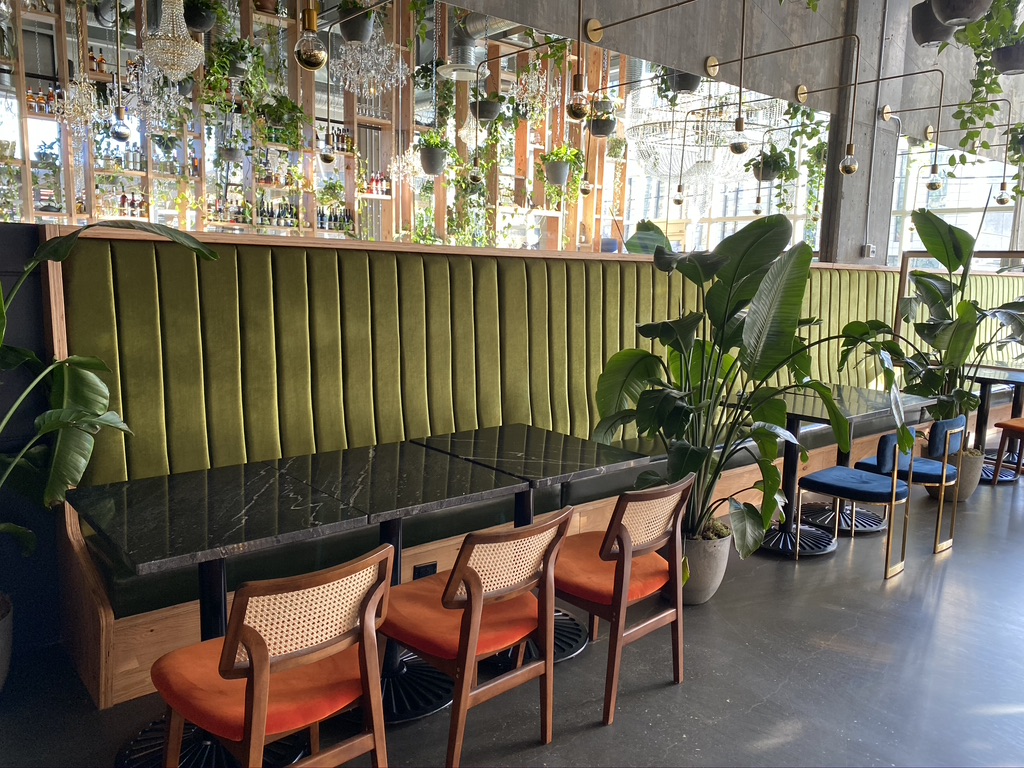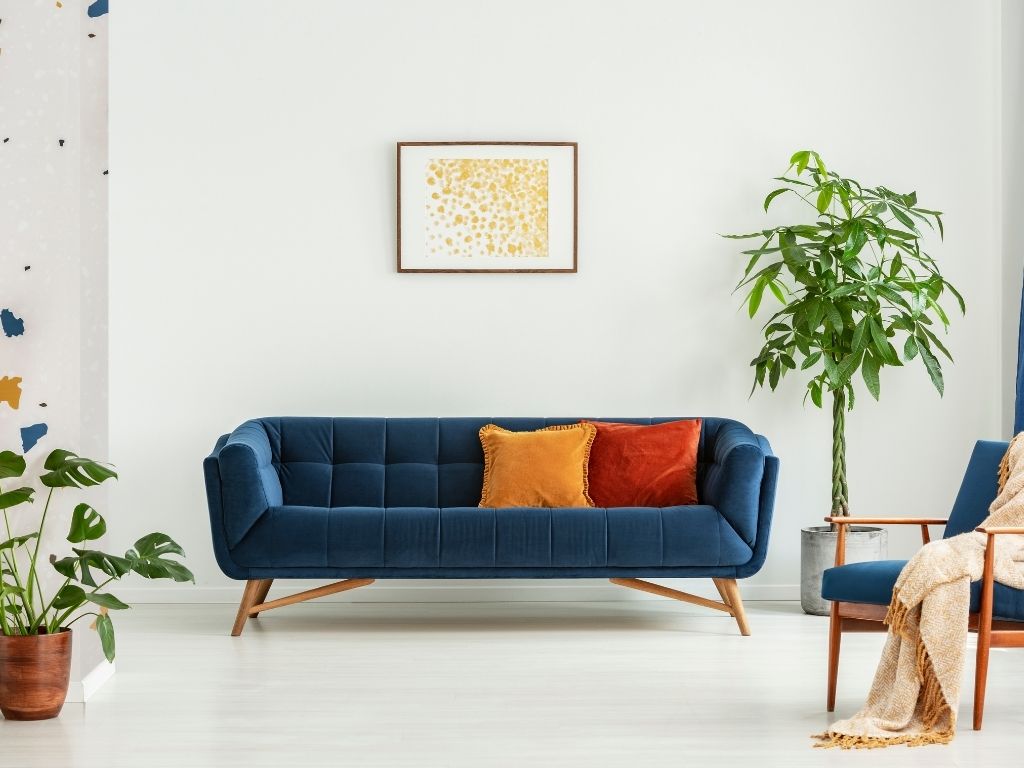Embracing Timeless Elegance with Mid-Century Modern Furniture
Mid-century modern furniture, with its origins in the 1950s, was once regarded as the epitome of futuristic design. Today, it’s celebrated for its vintage charm, seamlessly blending the past with a timeless aesthetic that continues to captivate. This enduring style has etched its place as one of the most influential and lasting design movements of our era.
Calgary, a city known for its keen eye on trends, reflects this through its interior design choices and showhome aesthetics. Whether you’re seeking to infuse your personal space with this classic style or aiming to make a statement in your hospitality venue or office foyer, Calgary Interiors is your go-to resource for achieving that perfect mid-century ambiance.
Our passion lies in assisting individuals and businesses alike to realize their vision, crafting custom pieces and curated collections that speak to the very essence of mid-century modern elegance. Join us on a journey through design history, and let’s bring your dream space to life.
Also Read – Looking for custom furniture?
What Is Mid Century Modern Furniture?

Mid-century modern furniture is a vintage furniture style that became popular in the 1950s through the 1970s. It is known for simple, sleek designs and juxtapositions of materials, and its classic appeal has made it spike in popularity again today.
Design Details

This type of vintage furniture has certain details that are common in its pieces. These designs are smooth, utilizing sleek lines and organic shapes. Some of the common details of this style are the skinny, peg legs found on pieces such as dressers or sofas. This type of vintage furniture is also simplistic, not using a lot of over-the-top details and instead favouring more clean lines and a more classic and functional approach.
Materials
A distinctive feature of these beautiful pieces lies in its eclectic use of materials. Designers of the era ventured into new territories by incorporating flexible materials like fibreglass, aluminum, steel, and plastic into their creations. Yet, this innovation did not sideline traditional materials such as wood, which remained a staple in mid-century modern furniture.
The revolutionary aspect of this period’s design philosophy was the unapologetic showcasing of these materials in their natural state. Unlike previous design practices that often concealed the true essence of materials under fabric or padding, mid-century modern celebrated the raw beauty and simplicity of its components. This honest and straightforward approach to material use continues to define mid-century modern furniture today, contributing to its enduring appeal and relevance.
Colours
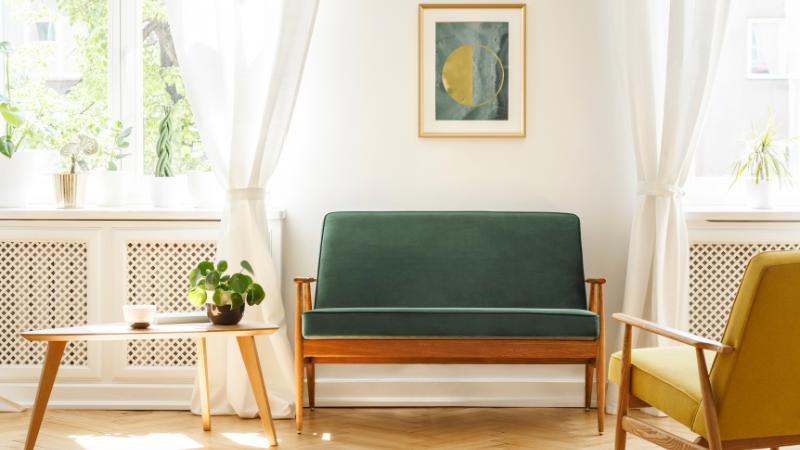
This furniture famously incorporates bold, dynamic colours into its design ethos. Initial introductions of this vintage style featured eye-catching hues like red, aqua, mustard yellow, olive green, and tangerine, bringing a lively palette to the forefront of interior decor.
Yet, it’s not just about the bright colours. These pieces also embrace neutrals and earthy tones, including brown, grey, and white. These subtler shades play a crucial role in balancing the design, providing a foundation that enhances and contrasts with the vibrant accents for a more thoughtfully composed space.
History of Mid Century Modern Furniture
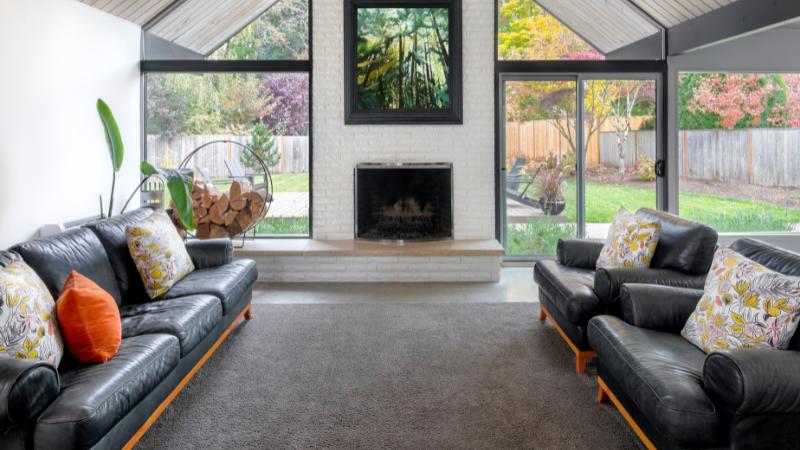
This furniture has a history dating back to the 1950s and was influenced by cultural and current events of the time. Interestingly enough, it was not even known as mid-century modern furniture until later.
Coining the Term “Mid Century Modern”
The term “mid-century modern”, used to classify this vintage furniture design style, actually did not emerge until 1983. The art historian and writer Cara Greenberg was the one to originally coin the term with the title of her book, Mid Century Modern: Furniture of the 1950s. Now, the name of this vintage furniture is a widely recognized phrase and style showcasing the most beautiful pieces some being brand new custom design and some vintage items.
Inspiration
Furniture designers were inspired by Danish modernism and Bauhaus, a German style of design. After World War II, the Americas were also seeing lots of immigrants who were familiar with and practiced in this design style. The baby boom and the subsequent need for housing with modern furniture additionally influenced this new era of exploration of materials and technological advances in design.
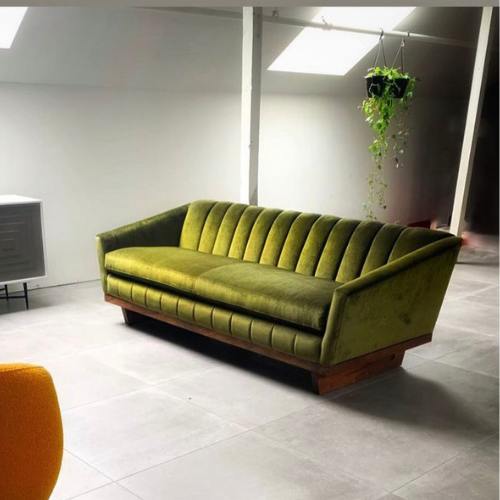
Mid Century Modern Furniture Today
This furniture is one of the more lasting and timeless design styles. It was popular when it originally came onto the design scene and is now making a comeback with revival pieces and beautiful, stylish reproductions.
Popularity
The pieces that were once popular in the 1950s and 1960s are still being reproduced today, and some are even more popular now than they were when they made their debut. Other pieces are being reimagined by retailers and re-released, updated to reflect the current tastes of consumers.
The reason for this enduring popularity is because pieces in this design style were designed for a way of living that has not changed over the years– we still want tons of storage, portable pieces, and everything on a smaller scale. This can be especially helpful for those living in large cities and small apartments, one does not have to sacrifice function and style to save space. In fact, furniture in this style helps to maximize a space’s potential.
Are there vintage furniture pieces in high demand?
Yes, certain pieces of vintage furniture have become highly sought after, often due to their iconic design, historical significance, and the designers behind them. These pieces are celebrated for their timeless aesthetic, innovative use of materials, and craftsmanship. Some of the most in-demand mid-century modern furniture pieces include:
- Eames Lounge Chair and Ottoman – Designed by Charles and Ray Eames, this chair has become synonymous with mid-century modern design. Its luxurious leather and plywood form offer comfort and style.
- Noguchi Coffee Table – Designed by Isamu Noguchi, this table features a unique and sculptural style with a glass top and wooden base that interlocks in a biomorphic shape.
- Florence Knoll Sofa – Florence Knoll’s approach to furniture design was practical and minimalist, emphasizing clean lines and functionality. Her sofas are highly prized for their elegant simplicity.
- George Nelson Platform Bench – Designed by George Nelson, this versatile bench can also serve as a table or low media console. Its clean, horizontal lines embody the mid-century modern ethos.
- Arne Jacobsen Egg Chair – This chair, designed by Arne Jacobsen, is notable for its unique shape and the comfort it provides. It’s a statement piece that has stood the test of time.
- Saarinen Tulip Table and Chairs – Designed by Eero Saarinen, the Tulip collection aimed to eliminate the “slum of legs” found under tables and chairs. The sleek pedestal base has become a hallmark of modern design.
- The Barcelona Chair – Designed by Ludwig Mies van der Rohe, this chair combines industrial materials with classical design principles, resulting in a piece that’s both elegant and timeless.
- The Wishbone Chair – Designed by Hans Wegner, this chair features a Y-shaped back and is known for its comfort and sturdiness, making it a favorite in dining rooms.
These iconic vintage furniture pieces have transcended time to become more than just furniture; they are cherished as enduring symbols of design. Whether you’re in search of an original vintage items or a high-quality reproduction, Calgary Interiors has the expertise and passion to craft these timeless designs for you. With a keen eye for detail and a deep respect for the original craftsmanship, Calgary Interiors can bring the elegance and simplicity of these highly sought after beautiful pieces and home furnishings into your space. We serve Calgary Edmonton and surrounding areas.
Frequently Asked Questions
What kind of furniture is mid-century modern?
This furniture typically refers to designs that combine sleek lines with organic shapes, using new materials or methods to reimagine classic pieces. At the time, these pieces were considered futuristic.
What year is mid century modern furniture?
It spanned a time frame from the 1930s to the late 1960s or very early 1970s. However, mid-century furniture is usually associated with the years occurring between the mid-1950s to the early 1960s.
Is this type of furniture timeless?
Yes, this furniture design style is considered one of the classics. It has timeless appeal and is instantly recognizable.
How can you tell if furniture is mid-century?
Many of these vintage furniture items will have original labels somewhere on the piece, such as in the drawers. If you are looking to determine if something is made in the mid-century style, but is not necessarily an original, look out for the design’s distinct style elements such as clean lines or peg legs on dressers or tables.
What is mid century modern furniture made of?
This type of vintage furniture experimented with many unusual materials for the time, such as plastic or steel. When it comes to the wood being used for this design style, teak was often used, and its rich, dark colour paired well with the bold colours used in mid-century modern design. Another common wood that was used for this style of furniture is oak.
Is this furniture still in style?
Yes, it is currently still in style and on-trend. The way the furniture fits into small spaces, its functionality, and its approachable lines contribute to its staying power in the design world and home furnishings. Even vintage furniture pieces can be refreshed, sometimes they just need new upholstery to get back to looking new again.
What does Scandinavian design and Danish modern have to do with mid century modern furniture?
Scandinavian design and Danish Modern are both intimately connected to mid-century modern furniture, sharing core principles of simplicity, functionality, and minimalism.
- Scandinavian Design: Emerging in the 1950s in the Nordic countries (Denmark, Norway, Sweden, Finland, and Iceland), Scandinavian design is celebrated for its simplicity, minimalism, and functionality. It shares many attributes with mid-century modern design, especially in its use of clean lines, organic shapes, and focus on practicality and comfort. Both styles value the beauty of natural materials and the elegance of understated design.
- Danish Modern: Originating in Denmark during the mid-20th century, Danish Modern is a subset of the broader mid-century modern movement, noted for its minimalist furniture and homeware designs. Esteemed for its craftsmanship and use of wood, particularly teak and rosewood, Danish Modern was pioneered by designers like Hans Wegner, Arne Jacobsen, and Finn Juhl. Their work, characterized by fluid lines and organic forms, has played a significant role in the global appreciation of mid-century modern design, emphasizing a seamless integration of form and function.
